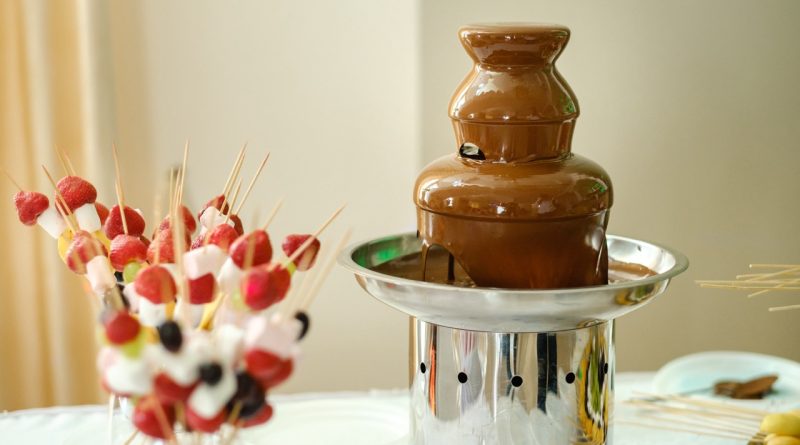Sephra Chocolate Shelf Life and Storage Tips
Sephra chocolate, known for its rich flavor and versatility, is a popular choice among chocolate enthusiasts and culinary professionals alike. Whether used for fondue fountains, desserts, or confectionery, understanding its shelf life and proper storage techniques can help maintain its quality. This article explores Sephra chocolate’s shelf life, optimal storage practices, signs of spoilage, and tips for extending its longevity, ensuring that you enjoy its deliciousness to the fullest.
Understanding the Shelf Life of Sephra Chocolate Products
Sephra chocolate products typically have a shelf life of about 12 to 18 months when stored correctly. This timeframe can vary depending on the type of chocolate, whether it is dark, milk, or white. Dark chocolate usually has a longer shelf life due to its lower moisture content, while milk and white chocolates may degrade faster due to their dairy components. It’s important to check the packaging for specific expiration dates to ensure optimal freshness.
The quality of Sephra chocolate can diminish over time, even if it is still safe to consume. Factors such as exposure to light, heat, and humidity can significantly affect its taste and texture. Therefore, understanding the shelf life isn’t just about safety; it’s also about preserving the chocolate’s intended flavor profile and usability in recipes or fondue applications.
When considering the shelf life, it’s crucial to note that unwrapped or improperly stored chocolate may spoil more quickly. For the best experience, always adhere to the product’s recommended storage guidelines and consume it before the expiration date to enjoy its full flavor potential.
Best Storage Practices for Optimal Chocolate Freshness
To maximize the shelf life and quality of Sephra chocolate, storage conditions are key. Ideally, chocolate should be stored in a cool, dry place away from direct sunlight. The perfect temperature range for chocolate storage is between 65°F and 70°F (18°C to 21°C). Too much heat can cause the chocolate to bloom, resulting in a whitish coating that, while harmless, can alter texture and taste.
Using airtight containers is another effective storage method. This prevents exposure to moisture and strong odors, both of which can compromise the quality of the chocolate. Vacuum-sealing is an excellent option for longer storage, as it removes air that can lead to oxidation and spoilage. If you need to store chocolate for an extended period, consider wrapping it in foil or parchment paper before placing it in an airtight container.
Avoid storing Sephra chocolate in the refrigerator or freezer unless absolutely necessary. The fluctuating temperatures in these environments can cause condensation, leading to undesirable texture changes. If refrigeration is unavoidable, allow the chocolate to come to room temperature before unwrapping, to prevent moisture accumulation.
Signs of Spoilage: When to Discard Sephra Chocolate
Recognizing when Sephra chocolate has spoiled is crucial for both safety and quality. Common signs of spoilage include an off smell, discoloration, or an unusual texture. Chocolate that has developed a white, powdery coating may have bloomed due to exposure to heat or moisture, which, while not harmful, can indicate a degradation in quality and flavor.
Another sign of spoilage is the presence of mold, which is a clear indication that the chocolate should be discarded. This can occur if the chocolate was stored in a humid environment or improperly sealed. Additionally, if the chocolate has a rancid taste or an oily appearance, it is best to err on the side of caution and dispose of it.
It’s important to remember that while some changes may not pose health risks, they can significantly affect your enjoyment of the chocolate. Always trust your senses; if the chocolate looks or smells off, it’s wise to avoid consumption.
Tips for Extending the Life of Your Chocolate Supplies
To extend the life of your Sephra chocolate, consider purchasing in smaller quantities that you can consume within the shelf life. This prevents the need to store chocolate for extended periods, reducing the risk of spoilage. Additionally, rotating your stock by using older products first will help ensure that nothing goes to waste.
Regularly checking the storage conditions is also vital. Maintain a consistent environment, avoiding places with high humidity or temperature fluctuations. If you live in a warmer climate, consider using a temperature-controlled storage solution to keep your chocolate in optimal condition.
Lastly, take advantage of proper sealing techniques. If you find yourself with opened packages, resealing them tightly can significantly extend their lifespan. Using desiccant packets in your storage containers can also help absorb any moisture, further preserving the chocolate’s quality.
In conclusion, understanding the shelf life and best storage practices for Sephra chocolate is essential for maintaining its exquisite flavor and texture. By following the outlined guidelines, you can ensure that your chocolate remains fresh and enjoyable for all your culinary endeavors. Whether you’re hosting a fondue party or creating delectable desserts, these practical tips will help you make the most of your Sephra chocolate experience. Enjoy your chocolate adventures with confidence!
